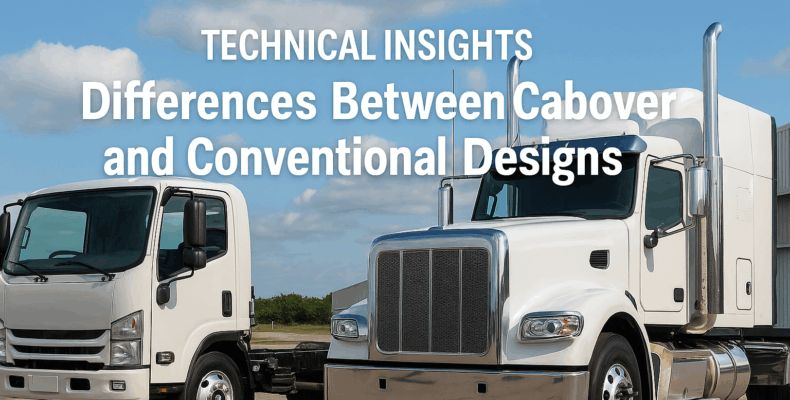Cabover vs. Conventional Trucks: Key Differences for Global Importers
If you’re planning to import a truck from Japan, one important decision is choosing between a cabover and a conventional design. Each style has unique advantages, depending on your driving needs, country, and business operations.
In this article, we explain the key differences between the two, and how to choose the best truck for your specific situation. Whether you need maneuverability or power, understanding these designs will help you make the right choice.
1. What Is a Cabover Truck?
A cabover (short for “cab over engine”) is a truck where the driver sits directly above the engine. This design is very popular in Japan, Europe, and many parts of Asia.
Advantages:
-
Shorter overall length: Easier to drive in tight cities.
-
Better visibility: You sit high and forward.
-
Smaller turning radius: Great for urban driving.
-
More cargo space: Because there’s no long hood.
Disadvantages:
-
Less comfortable ride: The cabin is closer to road vibrations.
-
Harder engine access: Requires tilting the cab to service.
For example, if you’re driving in Nairobi or Manila, cabovers make city logistics much easier.
2. What Is a Conventional Truck?
In a conventional truck, the cab sits behind the engine. This design is most common in North America and Australia.
Advantages:
-
Smoother ride: More room between driver and road.
-
Easier engine access: Just pop the hood.
-
More safety in a crash: The engine absorbs more impact.
Disadvantages:
-
Longer wheelbase: Not ideal for narrow streets.
-
More parking space needed: Not great for crowded depots.
As a result, conventional trucks are better for highway hauling and long-distance transport.
3. Design Comparison Table
| Feature | Cabover | Conventional |
|---|---|---|
| Cab Position | Over the engine | Behind the engine |
| Turning Radius | Tight | Wide |
| Road Visibility | High and forward | Moderate |
| Engine Access | Tilting cab | Open hood |
| Comfort | Moderate | Higher |
| Common Markets | Japan, Europe, Asia | U.S., Australia, Canada |
4. Which One Should You Import?
The answer depends on how and where you plan to use the truck.
-
For urban delivery or short-haul trips, cabovers are best.
-
For long highway routes, a conventional truck is more comfortable.
Moreover, local road conditions, maintenance access, and driver habits matter too. In Africa, for instance, both types are used—depending on terrain and city size.
5. Popular Japanese Cabover Trucks
Here are some great cabover trucks made in Japan:
-
Isuzu Elf – Lightweight and reliable
-
Mitsubishi Canter – Great for deliveries
-
Toyota Dyna – Easy to maintain
-
Hino Dutro – Smooth handling
-
Nissan Atlas – Compact and fuel-efficient
Each of these models is available for export from Japan in used condition.
6. Where to Find Trusted Exporters
Importing a used truck can be simple if you choose the right exporter. We recommend checking this list:
👉 Top 5 Trusted Japanese Used Truck Exporters for Global Buyers
These professional Japanese companies offer:
-
Quality inspections
-
Flexible shipping options
-
Experience with customs paperwork
Furthermore, they ship to over 100 countries around the world.
7. Final Thoughts: Know the Design, Import the Right Truck
To summarize:
-
Cabover trucks are best for cities and short trips.
-
Conventional trucks work better for long highways.
-
Each design has benefits—so choose based on your business needs.
Want to get started? Browse used Japanese trucks and speak with a trusted exporter today. The right choice now will keep your business moving for years to come.
